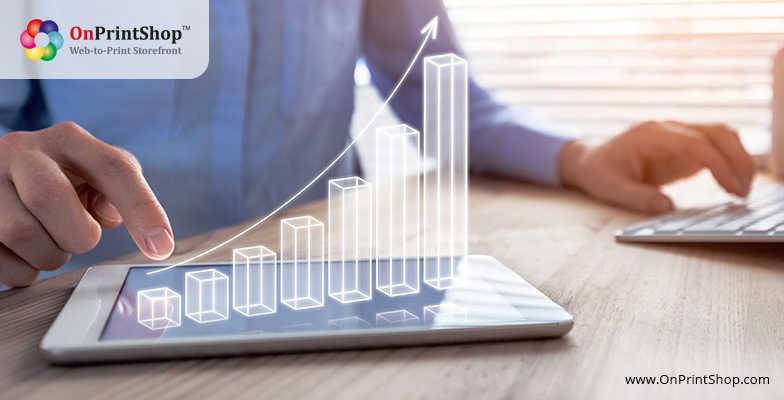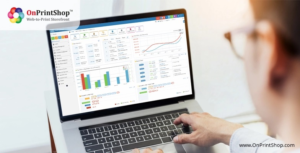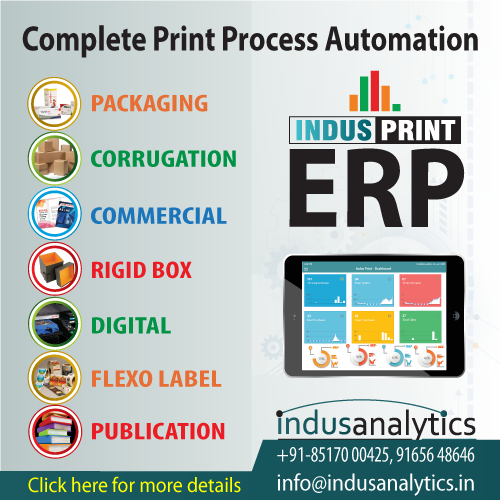Naimish Patel
The pandemic opened a can of worms for B2B printers. They have to strengthen their digital e-commerce online ordering channels to retain existing B2B clients and engage new ones. McKinsey Digital Quotient, Capital IQ says that top-quartile B2B Digital Leaders generate 5X revenue and are 8X more profitable than the rest of the B2B field.
As a result, Digital Transformation is rising as a key theme throughout tech research with all B2B solutions surging YoY.
Still, one-third of B2B printers take more than a year to move a digital initiative from concept to implementation. Fewer than 15% use the type of test-and-learn and rapid prototyping processes that have been shown to accelerate innovation and customer satisfaction.
Printers have to invest and implement flexible technology which can connect with their B2B digital infrastructures using optimal integrations for ordering, shipping, payment etc. to serve the unique needs of their customers. They are often scared to change their existing operational models due to a lack of proper understanding and guidance.
Add to this, the challenge of sales engineers to communicate and engage with 80% of the customers offline who give 20% of the business; coupled with lack of or delayed response, inconsistent customer follow-ups and absence of an online presence to inform customers of the new product and services, changing costs basis; all multiplying the woes of traditional B2B print businesses.
Download PDF: Learn how the print business increased Online Traffic by 1,000% within 3 Months of Migrating from Generic Ecommerce?
This shrunk focus on innovation around online sales and the customer experience – adds to the dropping revenue of B2B print companies.
So, what can B2B printers do?
Invest in focused digital strategies to improve ROI.
Research indicates that B2B printers doing so are generating 8% more shareholder returns and a revenue compound annual growth rate (CAGR) that is five times greater than the rest of the field (McKinsey).

The Solution
#1 Build an evolving digital strategy
Build a strategy toolbox with a plan that caters to the ever-evolving digital world. Research your core audience, ask your employees, stakeholders, vendors, existing clients –
- Who is my core audience? What buyer personas do they have?
- What are their likes, dislikes and interests?
- What income category do they belong to? What are their buying habits?
- What are their pain points? How can we address them?
- Are they online? If yes, then on which platform? How are they communicating?
Hyper-target and narrow down your core audience. As a B2B print company, know what your products and services are to cater to your audience group. Research in understanding their characteristics, buying/ spending preferences, their needs and their lifestyles. Touch base with them using surveys and gain updated insights in light of the coronavirus to create focused digital efforts to reach them. Hire the right digital experts and invest in the software to create meaningful digital touchpoints.
#2 Offer an omnichannel digital experience
Be it offline or online, offer consistent experiences to have them coming back to you. One way to do this is to devote time to research your customer and gather reviews. Directly ask your customers what they like and do not like and what they want to see improved? Feedback is a useful mechanism to unlock such hidden details.
Use data – emerging trends, market preferences, age-targeted preferences to help create targeted messaging for your existing clients and prospects. Involve your customer service and sales team to track the decision-making process of your retail and corporate clients to respond with custom products, services and offers.
Be careful that gathering feedback and data from your audience should not be a one-time activity. The volatile markets and upcoming trends have made “customer data” collection a never-ending pack of opportunities. Harness the power of data to improve customer experience and to show how much your brand cares.
#3 Empower your business with analytics
The basic principle of decision making for B2B printers is – that the best decisions come from accurate and updated data. From analyzing print workflows to knowing the customer ordering behaviour, quantifiable data can empower businesses and prepare them to beat the pandemic.
Predictive analysis, on the other hand, lets sales teams make informed decisions and modify their strategy. To stand out, print companies that can change customer perception and influence buyer behaviour are more likely to succeed than those who just play along with their customer preferences.
#4 Develop a well-connected print ecosystem
A B2B printer with a unified, inter-connected department with a clear goal is more effective and productive. Using automated and centralized processes will give companies greater clarity and direction.
Teams that communicate with the audience must have access to prospect markets, order histories, new product lines and updated buyer personas, at any point in time, for efficient functioning.
Align the goals of your sales and marketing teams. Create indulgent marketing with content and visuals to power up your brand. Most importantly, nurture client relationships, be it online or offline, to create dynamic experiences across channels. The more valued the customers feel, the more likely they are to stay loyal to your brand.
#5 Innovate with digital
Gartner predicts that buyers spend hardly 17% of their time meeting potential suppliers when considering a purchase. With fewer one-on-one customer interactions, online selling via digital channels will predominate.
B2B printers would require digital tools that engage customers, particularly in a way that mimics the traditional forms of buying and selling. These digital engagement tools will help overcome the challenges of aligning large groups of internal stakeholders virtually and simultaneously.
Adoption of digital channels will lead to shorter learning curves that save time and cost. Fast-paced innovation with rapid prototype development and MVPs (Minimally Viable Products) can persuade skeptical markets that a company can deliver on ambitious as well as high-profile customer initiatives.
Test & Learn
B2B printers would do well if they – pick a customer segment, gather data and analytics, consider the communication channels and technologies to cater to the chosen customer segment, prioritize automation and other technologies such as MVP in its customer-centricity drive.

Companies would also gain competencies by hiring experts and creating open communication and synergy between their teams. The complementary strengths of the B2B printer must be nurtured on an ongoing basis to keep pace with market volatility and trends to achieve significant results.
Data mining with social media will fuel business growth and improve revenue. With structured digitization, B2B printers can generate high-value opportunities and sustain growth during the pandemic and beyond.

















